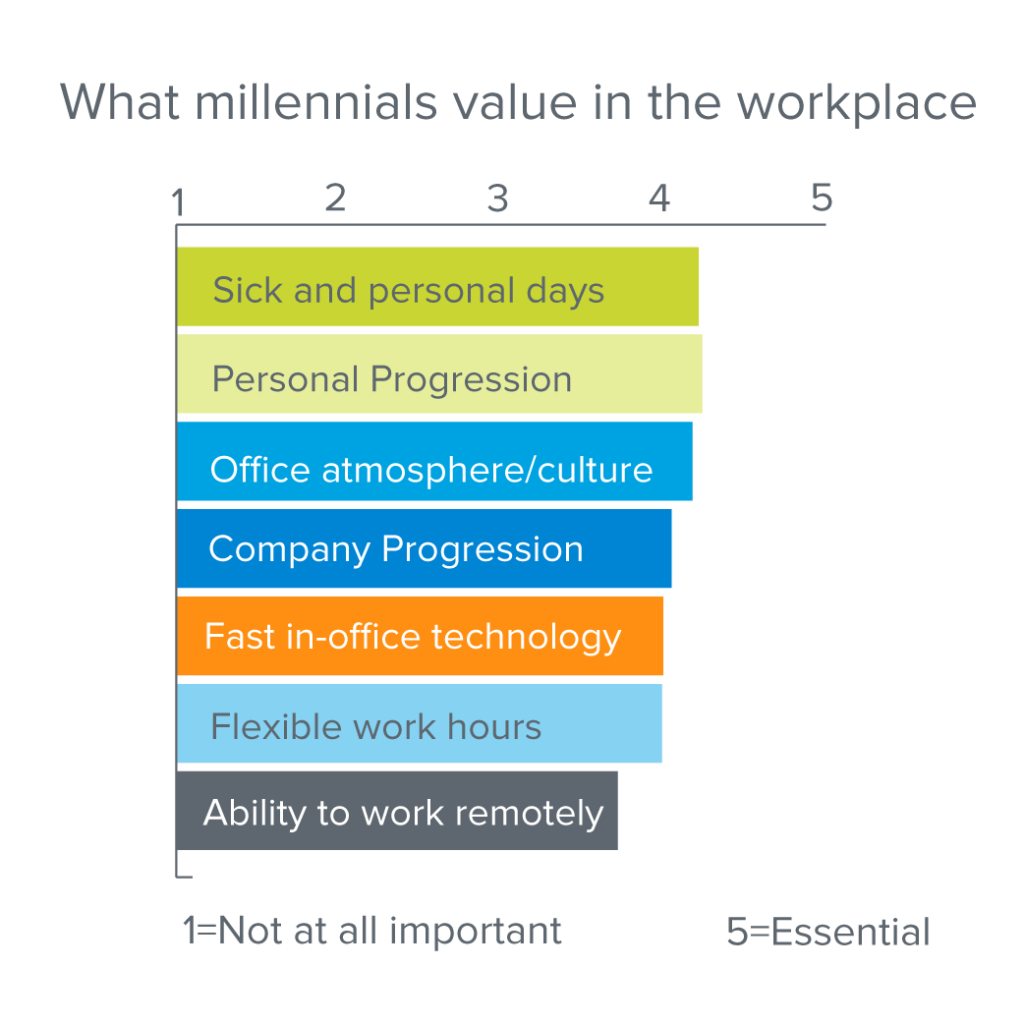“Will Work for Flex Time,” Says Millennials
“Flextime” was coined almost a half a century ago, and it’s taken about that much time for it to gain traction in America. Today, it’s gaining popularity due to millennial demand.
Jive Communications surveyed 2,000 millennials (18–34-year-old American adult office workers) to find out what they value in a company. Almost 72% said that flexible work hours were important, and 37% ranked it as “essential.” Companies are desperate to hire and keep their millennial employees, and one attractive feature is offering flexible work hours.
A Flex Time Solution
As far as demands go, offering a flexible work policy is easier and more affordable than increasing salaries. So if your company is working with a tight budget, become more competitive in hiring by taking advantage of a flexible work policy.
In a recent J.P. Morgan survey of the middle market, companies are doing just that. The survey asked how their company planned to adapt to an increasingly competitive market for employees, and the most popular response was flexible work hours. 30% are planning on offering flexible hours in 2018.
Implementing a Flexible Work Policy
Before you advertise flexible work hours on job postings, develop a policy that works for you. Flex time is a broad concept. Flextime or Flexible Work Hours or Flexible Work Arrangement (FWA) is:
“An alternative to the traditional 9 to 5, 40-hour work week. It allows employees to vary their arrival and/or departure times. Under some policies, employees must work a prescribed number of hours a pay period and be present during a daily “core time.”
You can even add flexibility to “where” your employees work. For example FWA also covers the idea of letting your employees work from home once a week. Because it’s so broad, there are a lot of solutions and approaches your company can take implementing a flexible work time policy. To know all of those options, you’ll need to do some research.
#1. Research
Whichever group is in charge of this policy project, they must conduct research.
Academic
One great resource is academic sources; flextime has been a popular academic research topic for the past thirty years. You can glean a lot from these studies.
Businesses and Organizations
Organizations like the EU have been decades ahead of America in instituting flexible work policies. Any organization or company that has been perfecting their flexible work arrangement over the years are excellent resources.
#2. Tools
“It takes more than a statement in the policy manual to institutionalize flex. It takes new methodologies to measure job success and investment in technology to keep employees in constant communication.”
—Martha H. Peak in Management Review
Technology
Often a successful flexible work policy requires some sort of new or improved technology. For example, if you’re implementing a flexible work arrangement that allows your employees to work from home once or twice a week, you’ll need to invest in network availability and strength, UCaaS technology, etc. Or if you’re using the popular concept of hot desking to create a FWA solution, then you’ll need compatible hot desking equipment.
Methodology
Along with new technology, FWA requires a new set of management skills and methods. Creating accountability with this new policy may require a methodology like project management software to create better visibility. In some ways, this policy will put you in a similar situation as managers of remote employees or a hot desking office culture. Take advantage of all the articles and literature on this similar topic.
For example, there is some excellent work on accountability tips for remote employees that you can apply to your new flexible hours work policy. We also have an ebook that discusses tips for managing and communicating with employees that work remotely.
#3. Training
Along with any technology training that needs to take place, a formalized policy change will require specific skills and procedures for management to learn. So you’ll need to hold some sort of training to prepare and educate your managers.
#4. Policy
Once you solidify the details and structure that works best for your company, make it official. This means a written, formal, finalized policy. You’ll use this language in a company announcement and in the company handbook.
Flex Your Company Policy
In this increasingly competitive market, one of the most valuable resource is skilled workers. Don’t put your company at a disadvantage when it comes to hiring. Even if your resources are limited in raising salaries, you can still appeal to millennial workers with a flexible work hours policy. With quality research, a small investment in the right technology and training, you can appeal to prospective employees and improve the work-life-balance of your current employees.


